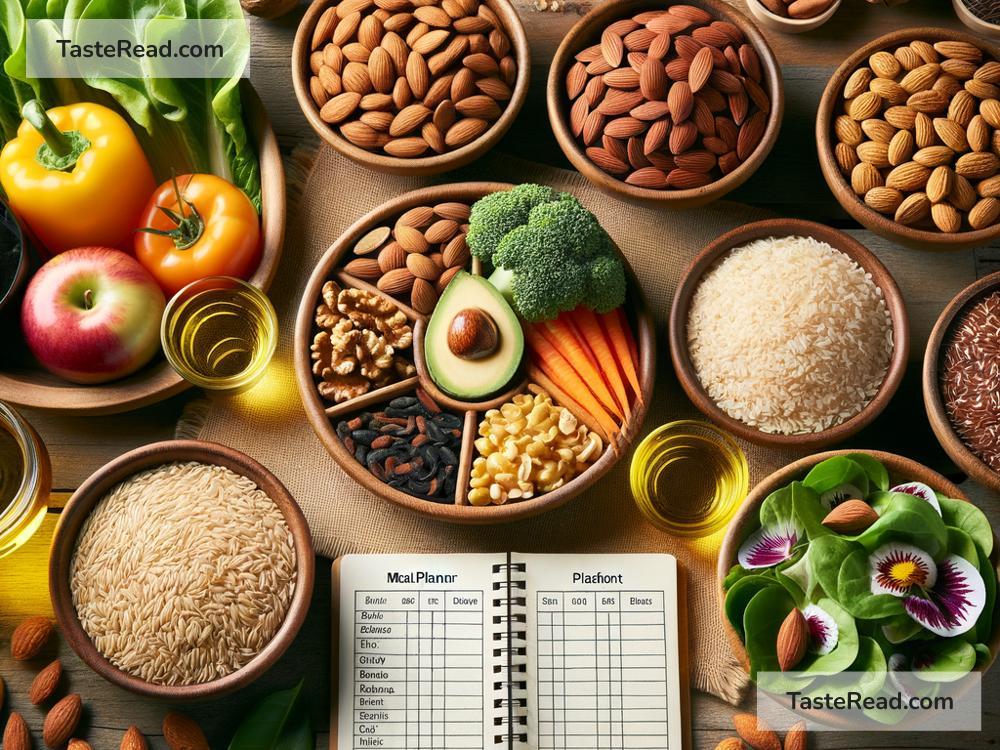How to Plan Meals for Optimal Tocotrienol Intake: A Simple Guide
When it comes to eating healthy, we often hear about vitamins like Vitamin C or minerals like iron, but there’s one nutrient that deserves more attention: tocotrienols. Tocotrienols are part of the Vitamin E family, and they offer powerful health benefits, such as protecting your heart, supporting brain health, and fighting inflammation. They’re not as famous as other nutrients, but they’re worth including in your diet. In this blog, we’ll discuss how you can plan your meals to boost your tocotrienol intake in simple, practical steps.
What Are Tocotrienols?
Tocotrienols belong to the Vitamin E family, which has two groups: tocopherols and tocotrienols. Both are antioxidants, meaning they help protect your body from damage caused by harmful molecules called free radicals. However, tocotrienols have unique properties that make them extra special. Research shows that tocotrienols are better at lowering cholesterol, protecting your brain cells, and reducing inflammation.
While tocopherols are found in many foods and supplements, tocotrienols are less common. This means you might need to be intentional about adding tocotrienol-rich foods to your diet.
Benefits of Tocotrienols
Why should you care about tocotrienols? Here are some key benefits:
-
Heart Health: Tocotrienols can help lower cholesterol levels and reduce plaque buildup in arteries, keeping your heart healthy.
-
Brain Protection: Studies suggest that tocotrienols may protect brain cells, potentially reducing the risk of age-related diseases like Alzheimer’s.
-
Anti-Cancer Properties: Tocotrienols are being researched for their ability to slow the growth of certain cancers.
-
Skin Health: They can help reduce inflammation and promote glowing skin.
With all these benefits, it’s clear why including tocotrienols in your meals is a smart move.
Foods Rich in Tocotrienols
Tocotrienols are mostly found in certain plant-based oils and foods. Here’s a list of some great sources:
-
Palm Oil: The richest source of tocotrienols, especially red palm oil, which is unrefined and packed with nutrients.
-
Rice Bran Oil: Another excellent oil that contains a high level of tocotrienols.
-
Annatto Seeds: These seeds, often used as a natural food coloring, contain almost pure tocotrienols.
-
Barley: Whole barley contains tocotrienols, as well as other antioxidants.
-
Wheat Germ: A small but mighty source of both tocopherols and tocotrienols. Add it to smoothies or sprinkle it on cereal.
-
Cereal Grains: Oats, rye, and corn also contain small amounts of tocotrienols.
-
Coconut Oil: While it isn’t as high in tocotrienols as palm oil or rice bran oil, coconut oil contains some.
By incorporating these foods into your meals, you can increase your tocotrienol intake naturally.
Meal Planning for Optimal Tocotrienol Intake
Planning meals to include tocotrienol-rich foods doesn’t have to be complicated. It’s all about making small adjustments and adding these foods whenever possible. Here’s a step-by-step guide:
1. Start with Breakfast
Breakfast is a great place to begin. Add a tablespoon of wheat germ to your smoothie, yogurt, or oatmeal for a tocotrienol boost. You can also cook your eggs or saute vegetables in rice bran oil or red palm oil. If you eat cereal grains like oats or barley, you’ll get small amounts of tocotrienols too.
2. Midday Meal: Keep It Simple
For lunch, think about using tocotrienol-rich oils in your cooking. Toss a rice bran oil-based dressing on your salad, or stir-fry vegetables with coconut oil or palm oil. Incorporating whole grains like barley into salads or soups is another easy way to add tocotrienols.
3. Snack Smart
Your snacks can also include tocotrienol-rich foods. Roast whole barley for a crunchy snack or add coconut to snack bars and baked goods. If you enjoy baking, use red palm oil or coconut oil as the fat source in recipes for muffins or energy balls.
4. Dinner: Go Big
Dinner offers a chance to really get creative. Use rice bran oil to make stir-fries, and pair them with barley or other whole grains. You can also create a healthy sauce using coconut or palm oil. Meals with seafood, whole grains, and vegetables cooked in tocotrienol-rich oils ensure you end the day well.
Cooking Tips
When cooking with tocotrienol-rich oils like red palm oil or rice bran oil, it’s important to know their limits. Overheating oils can destroy their nutrients. Use these oils for low-to-medium heat dishes or in recipes where they retain their nutrients, like salad dressings or light sautéing.
Don’t Forget Balance
While focusing on tocotrienols is important, remember to keep your overall diet balanced. Eat plenty of fruits, vegetables, lean protein, and healthy fats. A meal plan that includes a mix of nutritious foods will amplify the health benefits of tocotrienols and keep your body thriving.
Supplements: A Backup Plan
If you’re struggling to include tocotrienol-rich foods in your diet, you can consider tocotrienol supplements. However, it’s always best to get nutrients from food first. Speak to your doctor before adding any new supplements to your routine.
Final Thoughts
Tocotrienols may not be the hottest topic in nutrition yet, but they’re worth integrating into your meals for their incredible health benefits. By including foods like red palm oil, rice bran oil, barley, and wheat germ in your diet, you can boost your tocotrienol intake naturally. With a little planning, you’ll be supporting your heart, brain, and overall health—and enjoying delicious meals while you’re at it!
Start planning your tocotrienol-rich meals today, and watch your health improve one bite at a time.


